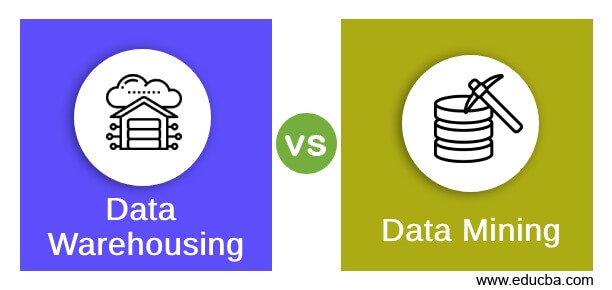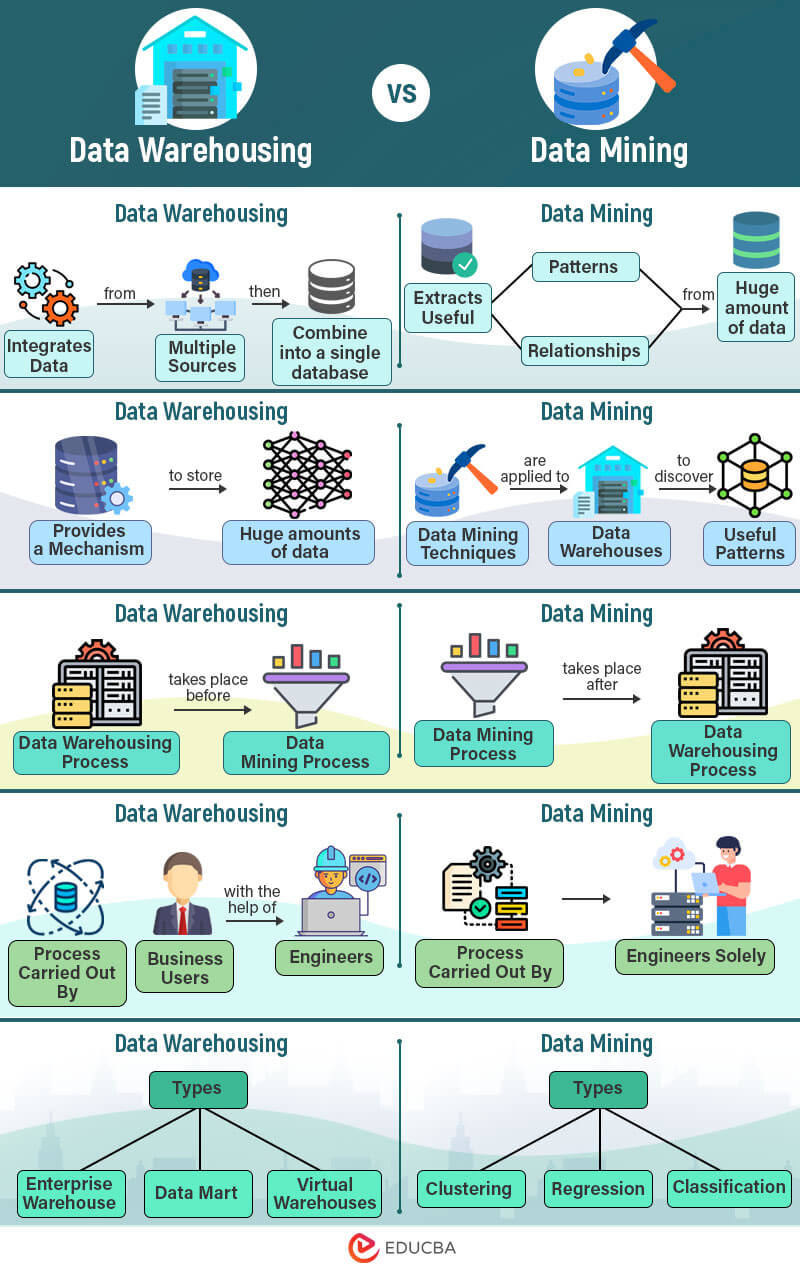Updated July 29, 2023

Difference between Data Warehousing vs Data Mining
A Data Warehouse is an environment where essential data from multiple sources is stored under a single schema. It usually contains historical data derived from transaction data. Data Mining is used to extract useful information and patterns from data. Data mining can be carried out with any traditional database, but since a data warehouse contains quality data, it is good to have data mining over the data warehouse system. Data Mining supports knowledge discovery by finding hidden patterns and associations, constructing analytical models, and performing classification and prediction.
Let us understand the Difference between Data Warehousing and Data Mining in detail.
Key Features
Data Warehouse
- Subject-Oriented: A data warehouse is subject-oriented as it provides knowledge around a subject rather than the organization’s ongoing operations. These subjects include a product, customers, suppliers, sales, revenue, etc. A data warehouse focuses on modeling and analysis of data for decision-making.
- Integrated: A data warehouse is constructed by combining data from heterogeneous sources such as relational databases, flat files, etc.
- Time-Variant: The data in the data warehouse provides information concerning a particular period.
- Non-volatile: Non-volatile means data, once entered into the warehouse, should not change.
Benefits of Data Warehouse
- Consistent and quality data
- Cost reduction
- More timely data access
- Improved performance and productivity
Data Mining
- Automatic discovery of patterns
- Prediction of likely outcomes
- Creation of actionable information
- Focus on large data sets and databases
Benefits of data mining:
- Direct marketing: The ability to predict who is most likely to be interested in what products
- Trend analysis: Understanding trends in the marketplace is a strategic advantage because it helps reduce costs and timeliness to market.
- Fraud detection: Data mining techniques can help discover which insurance claims, cellular phone calls, or credit card purchases are likely to be fraudulent.
Head-to-Head Comparison Between Data Warehousing vs Data Mining (Infographics)
Below is the Top Comparison Between Data Warehousing and Data Mining:

Key Differences Between Data Warehousing and Data Mining
- Data Warehousing is the process of extracting and storing data to allow easier reporting. Whereas Data mining is the use of pattern recognition logic to identify trends within a sample data set, a typical use of data mining is to identify fraud and to flag unusual patterns in behavior. For Example, Credit Card Companies provide you an alert when you are transacting from some other geographical location that you have not used previously. This fraud detection is possible because of data mining.
- The main difference between data warehousing and data mining is that data warehousing is the process of compiling and organizing data into one common database. In contrast, data mining is the process of extracting meaningful data from that database. Data mining can only be done once data warehousing is complete.
- A data warehouse is a repository to store data.
- Data warehousing is merely extracting data from different sources, cleaning it, and storing it in the warehouse. At the same time, data mining aims to examine or explore the data using queries.
For example, A data warehouse of a company store all the relevant information about projects and employees. Using Data mining, one can use this data to generate different reports like profits generated, etc.
- A data warehouse is an architecture, whereas data mining is a process that is an outcome of various activities for discovering new patterns.
- The data warehouse contains integrated and processed data to perform data mining during planning and decision-making, but data discovered by data mining results in finding patterns that are useful for future predictions.
- The data warehouse supports basic statistical analysis. The information retrieved from data mining is helpful in tasks like Market segmentation, customer profiling, credit risk analysis, fraud detection, etc.
- Data warehousing is the process of pooling all relevant data together, whereas Data mining is the process of analyzing unknown data patterns.
- Data warehouses usually store many months or years of data. This is to support historical analysis. Data mining uses pattern recognition logic to identify trends within a sample data set.
Conclusion
Data warehousing is a process that must occur before any data mining can take place. A data warehouse is the “environment” where a data mining process might take place.
Recommended Articles
We hope that this EDUCBA information on “Data Warehousing vs Data Mining” was beneficial to you. You can view EDUCBA’s recommended articles for more information.

